S
even years ago, watch fan Andrew Dakin bought a Movado watch on eBay for $500. It looked like a mint timepiece, well-maintained and classically styled. He had just started collecting watches, so he was happy to get a deal on a unique and valuable timepiece.
“At that point I was probably like 30 watches in so I thought I knew what I was doing,” said Dakin, describing his early collecting experiences.
Many first-time collectors like to create huge collections of watches, picking up cheaper pieces to get a feel for the market. This Movado was something special, however. It was made by a classic maker made famous by their ultra-minimalist Museum watch, a piece featuring a dot, a noon and nothing else. The watch arrived in the mail and it looked legitimate. He wore it for a while and then took it to a jeweler to see how much it would be worth if he cleaned it up and resold it.
The jeweler took the watch to the back of the shop and came back upset.
It was a fake. A very good fake.
Ebay and other online markets have always trafficked in fakes. From fake memory cards to swap meet Louis it’s hard for the average online consumer to tell if they are buying real products and often they don’t care. But in the case of watches like Movado, Omega and Rolex, it’s getting harder to tell the real from the replica and the stakes are surprisingly high.
“I would have worn and eventually sold it thinking it was real had I never compared to a real one,” said Dakin. He was impressed.
“Once you see a good fake it’s actually scary to think about how many people are walking around with a fake watch that they think is real and they will sell or pass down to someone thinking it’s real,” he said.
Fake watches have always plagued the horological arts. But these fakes – created so that they can sell for a maximum price to unsuspecting buyers – are getting better and better. In fact, the Movado Dakin bought seven years ago was probably far from the best available fake on the market.
Welcome to the strange world of SuperFakes, a new breed of fake watch that, thanks to advances in manufacturing and 3D printing, are often indistinguishable from the real thing. Fakers make these pieces for pennies and can sell them for thousands, often duping first-time collectors and experienced resellers with their high-quality creations.
Fakes have been around as long as watches have graced the pockets and wrists of folks who would pay for them. In the 1800s, boulevardiers considered American watches made by Hampden and Elgin to be the best in the world. Made in bulk using new machining techniques, American watches beat Swiss and French pieces in quality and reliability. Swiss watchmakers found themselves at a loss. They depended on untrained laborers and older milling and cutting machinery, and they found their pieces were getting steadily worse.
Swiss watchmakers had a plan, however. They would use American techniques to create exact copies of American watches.
The most frequently duplicated pieces were popular “railroad watches,” the saucer-sized pocket watches carried by old-timey train conductors. Rather than copy the pieces wholesale, the Swiss depended on marketing slight of hand to sell their wares: They changed popular brand names slightly to avoid detection and simply sold them alongside the superior American pieces. Illinois-made Elgin became the Swiss-made Elfin. Marion Watch Company became Marvin (which, in turn, investors revived as a luxury brand in the 21st century), and “A.W.W.Co” became “B.W.W.Co.”. These fakes, far from being the worst of the lot, were designed to copy the superior American wares in every way.
This habit fell away as Switzerland caught up with and surpassed American manufacturers. Now, however, it’s the Swiss suffering from the same fake fate that befell the American brands.
The fakes industry – created as a reaction to the changes in engineering techniques in the 18th and 19th centuries – resurfaced in the 20th century when watchmakers began selling luxury watches made of steel and brands like Rolex gained prominence. Because it was far easier to fake a watch in plain metal than in a gold, Canal Street in New York became a veritable wholesale market for fake Presidents and Daytonas. Many of these reproductions were laughably bad with poorly placed logos, fake chronograph pushers, and even quartz movements in watches that were supposed to be completely mechanical and “hand made.” But that didn’t stop buyers from snapping up these “faux-lexes” as status symbols.
These obvious fakes have slowly given way to fakes that are so uniquely well-made that they are almost indistinguishable from the real thing.
The Federation of the Swiss Watch industry says Switzerland produces 30 million watches a year. They estimate that fakers build 1.6 million a year, ensuring that your chances of finding a fake in the wild are fairly high. The new manufacturing technologies that make it easier for Chanel to make ceramic cases make it easy for fakers to produce something similar, if not identical, to the real thing. It is trivial to get these fakes from the factory to the street, leading to a flood of fake watches that are almost indistinguishable from real watches to the average consumer.
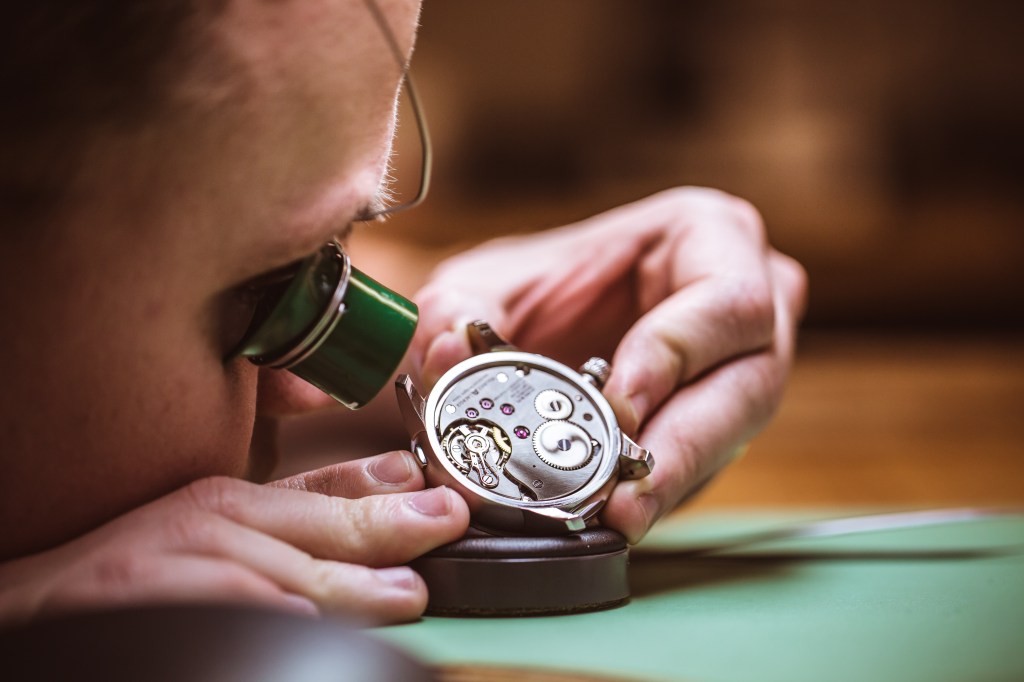
Hamilton Powell sees the flood of SuperFakes almost every day. His company, Crown & Caliber, specializes in reselling pre-owned watches. Owners send in their watches for appraisal and receive a check. Crown & Caliber’s in-house watchmakers clean and regulate the pieces and then sell them to collectors who want a deal on popular pieces like Rolex Submariners, Omega Speedmasters, and Panerai Submersibles. The company has processed 15,000 fine watches and has seen hundreds of fakes.
“Historically, less than 5 percent of the watches that we authenticate are fake,” said Powell. “At one point this number was as high as 10 percent.” However, the numbers are growing.
Powell is pragmatic about the fakes market. It’s inevitable.
“E-commerce has been a blessing and a curse,” he said. “The blessing? The world is at your fingertips, and we can now find and receive goods faster than ever before. With that, there are legitimate resale platforms out there, making it easy to find and access a wide selection of luxury timepieces. These sites have built their business on authentication and quality. However, there is a market of people who are selling fake goods passed off as real.
“Technology advancements and access are the culprits. To start, access to high-tech machinery is more prevalent than ever,” he continued. “So, what could have been a rare or cost-prohibitive piece of equipment is now available to more people.”
F
akes come in all shapes and sizes. Rolex is the most faked with copies of Submariner, Daytona and Datejust appearing regularly. Breitling and Omega are next with Super Avenger, and the Seamaster fakes hitting the market daily. Interestingly, fakers have copied almost every Panerai model thanks to the simplicity of the watch. In fact, fakers have copied many of the specific Panerai hallmarks, including specially designed internal parts designed to prevent faking.
“Panerai SuperFakes are some of the best out there given the minimalism on the dials,” said Powell.
These watch brands are entry-level in the strange and pricey Pantheon of luxury watches. However, said Powell, less popular and more expensive makers like Chopard, Piaget and Hublot are seeing fakes hit the market, a testament to the broad popularity of once-exclusive watch models. While actually quite difficult, fakers spend extra time and money on creating realistic SuperFakes because the stakes are so high.
Emma Monks, head of social media risk at Crisp, a brand-safety adviser, says that fakes worth “nearly half a trillion dollars” hit the market yearly.
“It’s not just an issue of hitting the luxury brand’s bottom line, though. The reputational damage and loss of consumer trust are massive problems,” she said. “Counterfeits are often of inferior quality leading to, at best, an influx of customer complaints and, at worst, injury from dangerous fakes. If the buyer believed the product they bought to be genuine, even after they approach the brand and discover it’s a fake, the lingering bad taste from the experience can sour their trust and appreciation of the brand.”
In other words, fakers can make thousands of dollars on a good fake rather than a few dollars on an obvious fake. In fact there is an entire world of ”replica watches” that sell many exact copies of popular watches. This strange underworld is similar to the replica car market where fans buy supercars for $20,000 because they are “reskinned” Toyota Camrys and Corollas.
These replicas live in the murky world of dedicated fandom if you can convince an eBay buyer that the Rolex they are buying is authentic a $300 replica turns into a $5,000 jackpot.
“The high price-point of luxury is what appeals to these counterfeit craftsmen,” said Powell. “They can make a lot of money without a lot of investment into each piece.”
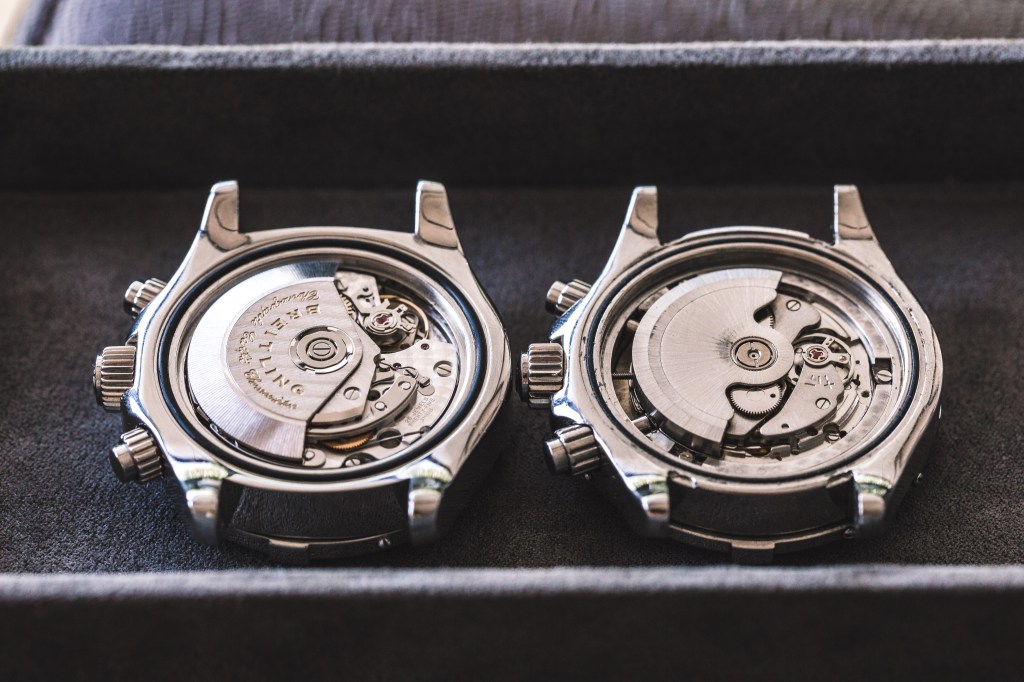
Thanks to a rise in the vintage market, fakers can also turn old watches into Rolexes and Omegas by replacing parts like faces, hands and movements. In fact, some fakers create real-looking parts on authentic equipment, a wild extravagance that is well worth the time and effort. Some fakers also create frankenwatches, pieces that use real parts to create a watch that is more valuable and collectable than the original piece.
“When a brand hits a rough patch, they will sometimes sell off some of their equipment,” said Powell. “This allows people to create inauthentic parts made on authentic machines.”
How do fakers make these watches so realistic? They begin by choosing an easily reproducible design. Take these Panerai Luminors, for example. The real model, on the right, would be indistinguishable from the fake on the left to the untrained eye. The font and hand style look quite similar and only small clues – the thickness of the hands, the quality of the illumination – would give away the trick.
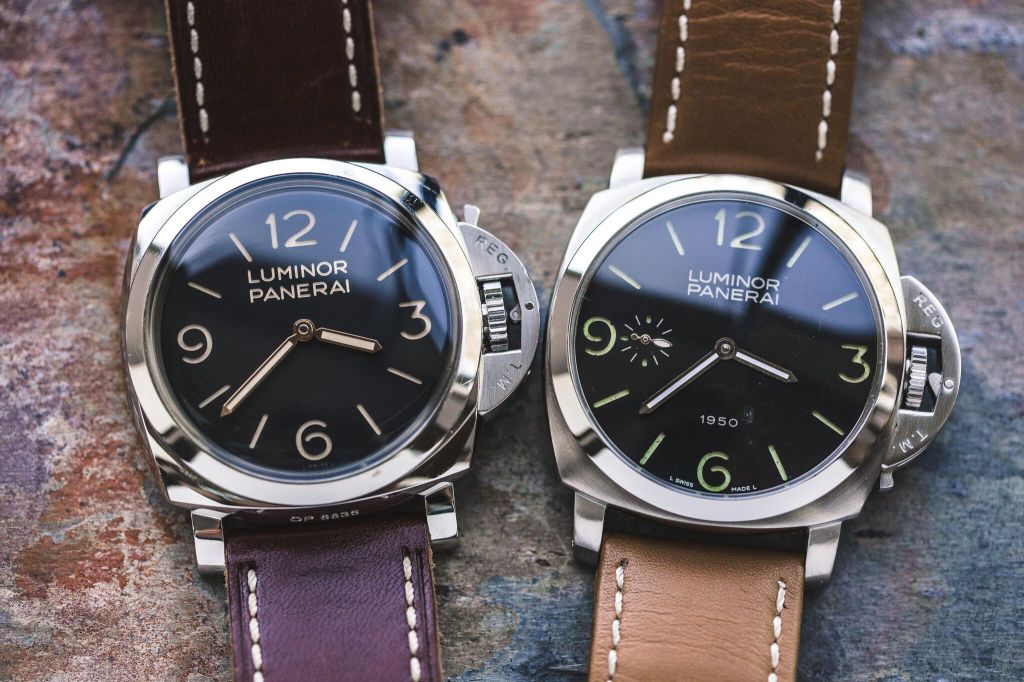
The trouble continues inside these pieces. In the photo above, the piece on the right is the fake. Compare it to the more austere but real movement on the left. The fake movement, a copy of the Unitas 6497, has been engraved with repeating logos and “beautified” with a few unique additions to an otherwise generic movement.
This exuberant modification is designed to through the unwary off the trail. After all, a storied watchmaker like Panerai wouldn’t put such a boring movement into a $10,000 watch… or would it?
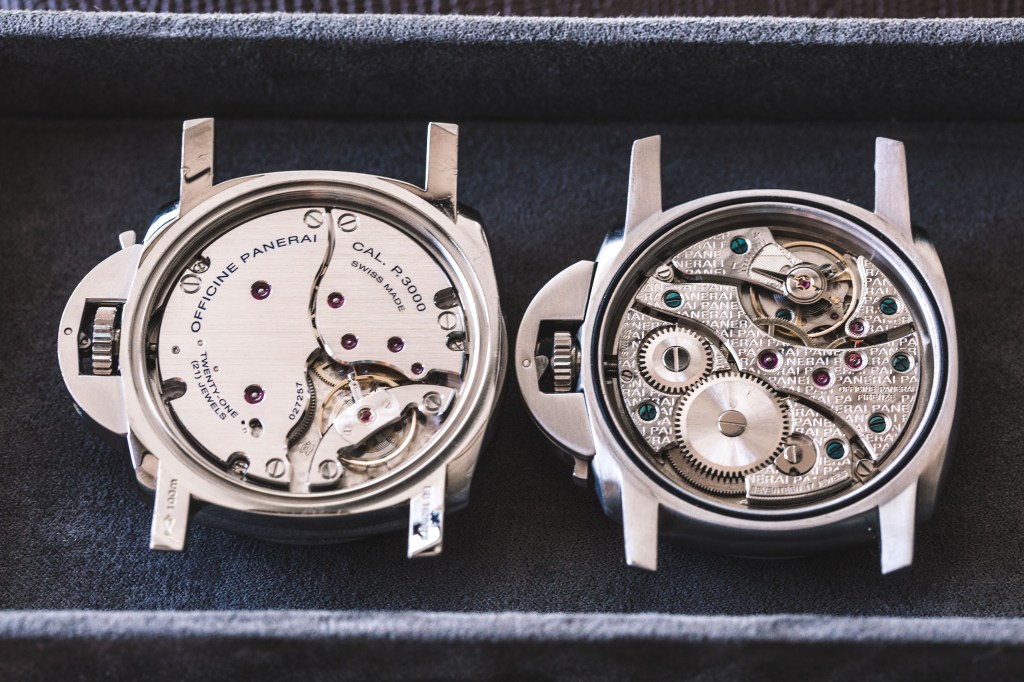
T
echnologies like 3D printing are improving fake manufacturing, as well. While not everything can be 3D-printed, metal sintering and CNC machines let fakers create unique cases using powerful, high-resolution 3D printers. But there is still a great deal that needs to change in order for fakers to truly 3D print fake pieces.
“SLS type of metal parts are too porous and have a matte finish,” said Jon Buford, a 3D printing expert in Hong Kong. “For the most part, the precision isn’t there for the feature size. You are probably more likely to be able to do a micro-CNC (subtractive) type of process to make things and have the same output as the traditional processes. Another possibility would be to do additive 3D printing process and then do precision subtractive processes to clean them up.”
High end fakers aren’t just effecting watchmakers, however. Fakers are taking the tricks they learned in manufacturing to other products. A few months ago Benjamin Saks of Kerfcase needed a copy of an iPhone X to test a new case model. They visited the web and found just the thing.
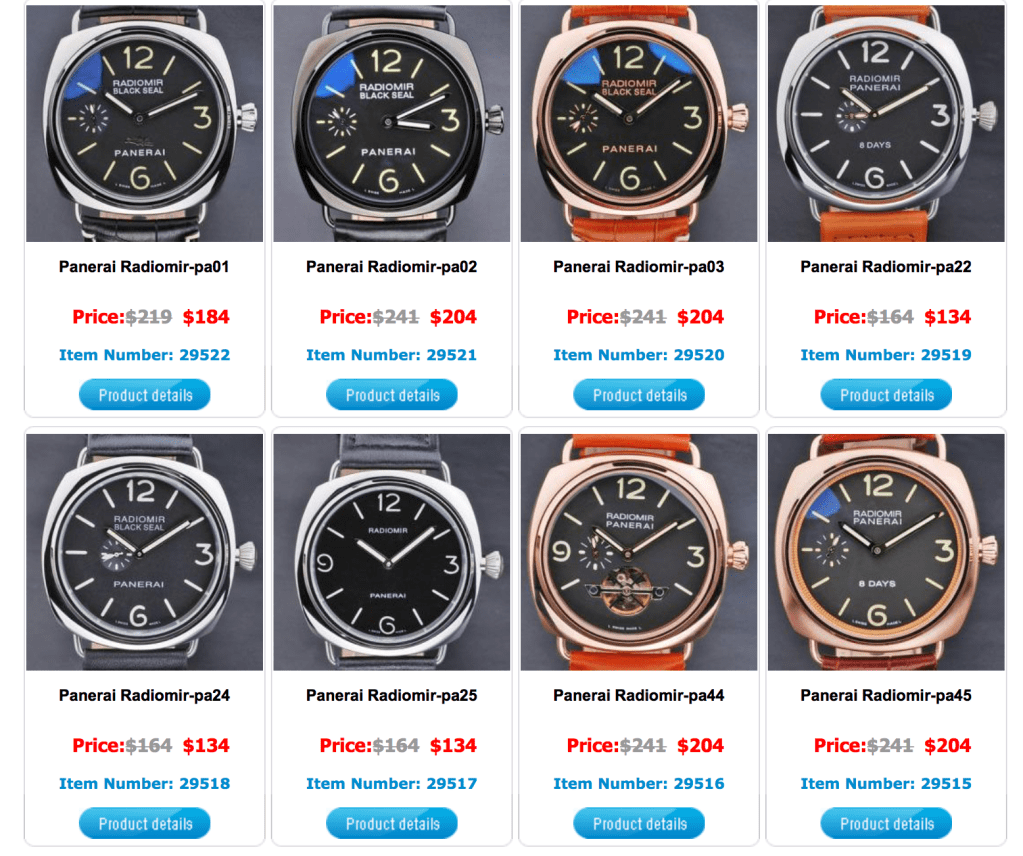
“Since apple announced in September but the iPhone X didn’t drop till November This gave us a lot of time to look at the drawings and photos of the phone, but I really wanted one in the shop to test,” he said. “I had looked around on the typical places. Alibaba and AliExpress have shady dummy phones, in bulk, but it’s always a crapshoot. I thought, hey, Amazon has everything. Literally. Maybe not for the best price, but it was worth a shot. So I did a simple search for ‘dummy iPhone’ and found this.”
It was a near perfect replica of an iPhone made with extremely high-quality components.
“It has a steel plate inside the injection-molded ABS frame. There is glass on the front and back (thin) and buttons with de-dents so they click. The port has nothing in it, and the speakers also are just holes. A close inspection would let you figure out it is a fake, but if left on the bar at your favorite watering hole, it would for sure get swiped,” he said.
“It is incredible that a whole industry exists to make products like this. The quality of the molds is very high – ejector pins are clean, seams are tight and the hand assembly that has to be done is amazing for something that likely costs a few bucks to manufacture.”
This frustrates everyone in the manufacturing industry.
“Detecting and combating counterfeiters is not easy,” said Monks. “Many are operating out of countries where prosecution may be impossible, and that gives them the confidence to flaunt their products on image-driven social platforms such as Instagram. Taking action against their accounts is digital whack-a-mole; the counterfeiter generally has dozens more accounts already created and ready to activate in order to avoid disruption to their trade.”
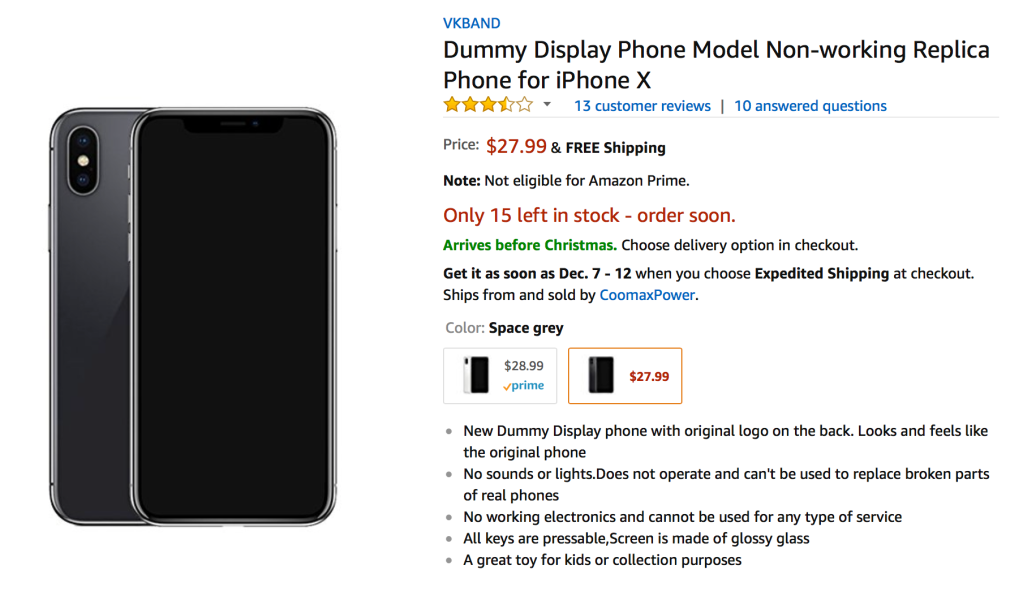
Ultimately these fakes end up hurting consumers and forces makers to dedicate precious resources to fake reduction rather than innovation. As wristwatches fall in popularity there is less to be made in the luxury watch market, making it all the more important for storied brands to fight back against fakes.
Whether or not you see the value in buying a $12,000 watch that can be faked for $5, watchmaking is a rapidly diminishing art and watchmakers are slowly leaving the field, disheartened by consumers who are happy to tote around a $300 fake Rolex over a real piece with history, provenance, and quality. Still, sometimes fakes make it through to consumers who end up disappointed that their amazing watch isn’t quite as amazing as they thought.
“We offer all of our customers an ‘out’ – we send them an empathetic email apologizing for having to be the bearer of bad news that the watch they sent us was a replica, we don’t use the word fake,” said Powell. “Most of these people never contact us back. The ones who do are generally really embarrassed and apologetic because they had no idea.”
John Biggs
http://feedproxy.google.com/~r/TechCrunch/JohnBiggs/~3/QmEZPQ8R7RM/
Source link



